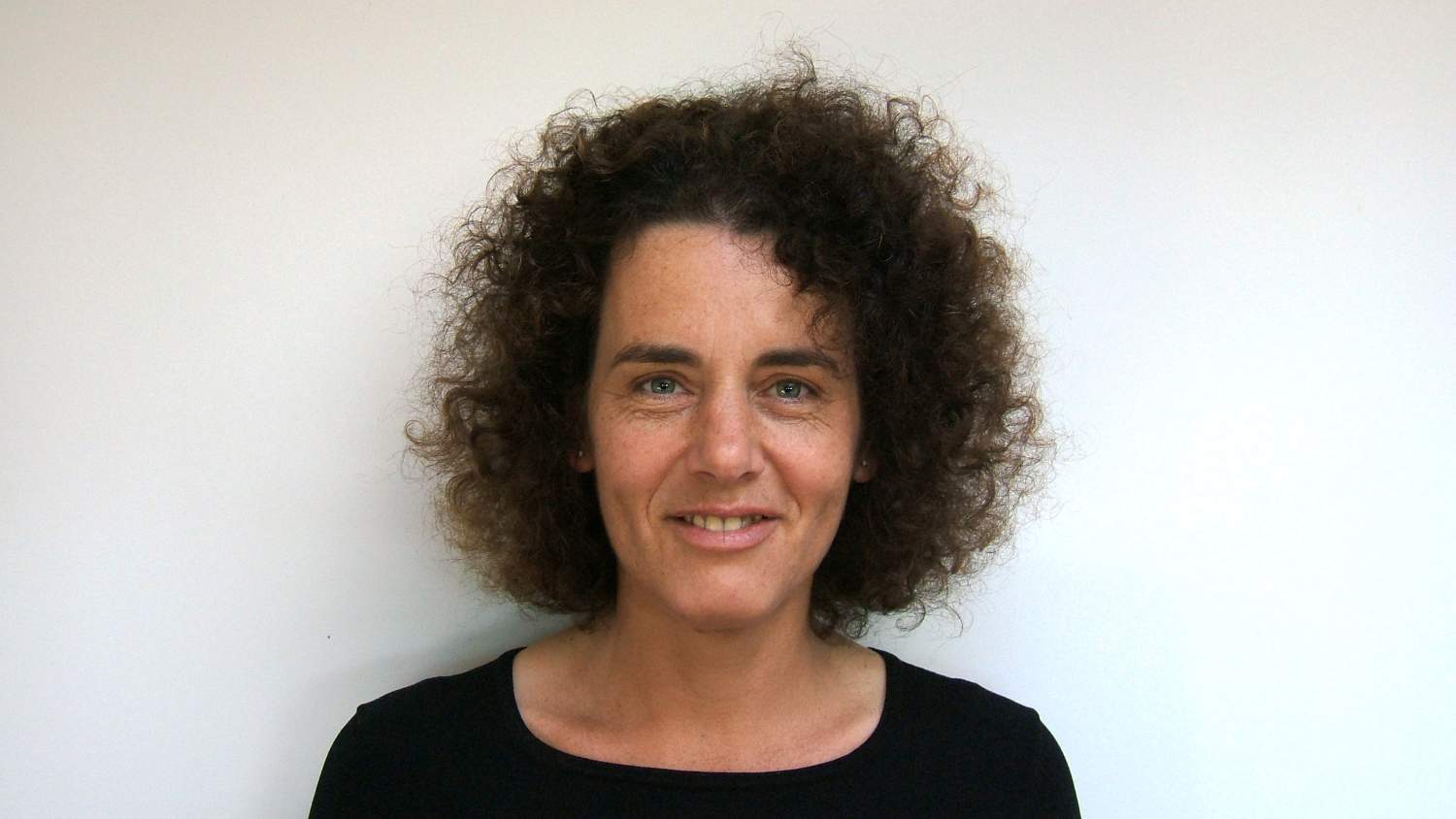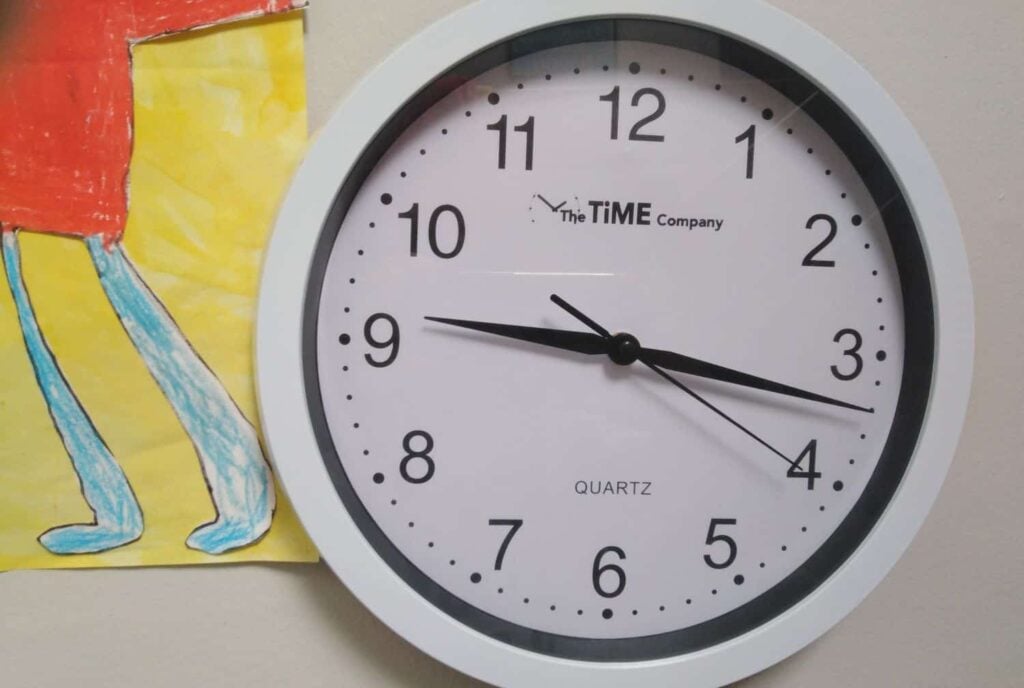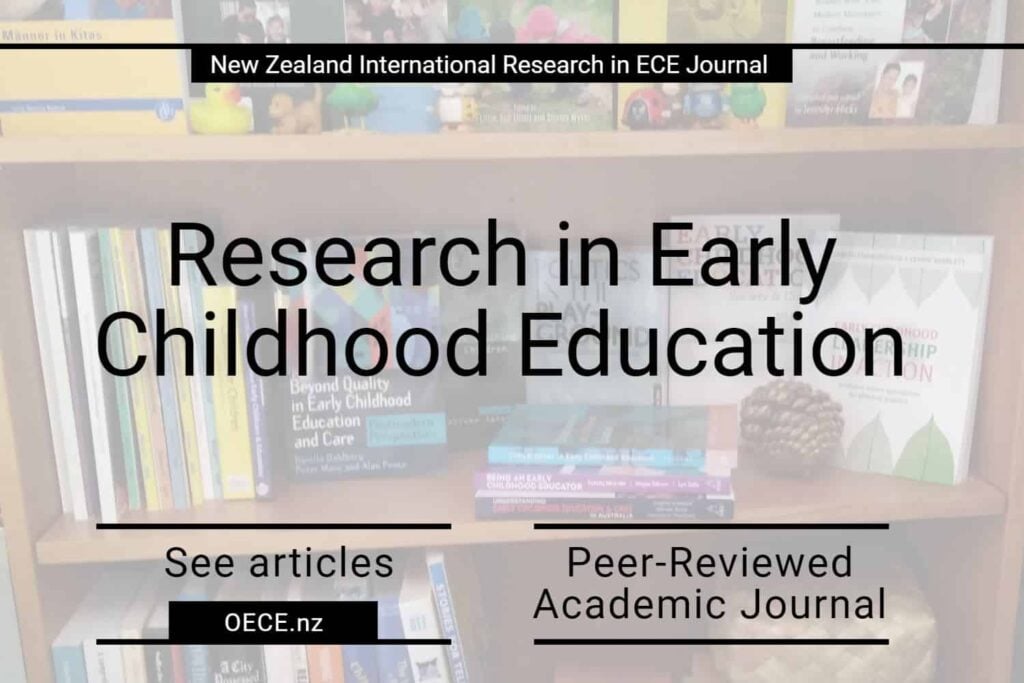This article on an “Agenda for Quality” by Dr Sarah Alexander extends on one originally published by the NZ Herald, March 3, 2017.
There’s a need to speak out about the quality of children’s care and early education in our country.
We have a strong early childhood system. It is an integrated system providing both care and education.1 But, there has been no clear policy direction or plan when it comes to quality and government has been getting a number of things wrong.
There is hope that a new Labour-led government may put the focus on quality. The education minister announced in February 2018 that the government intends to champion a high-quality public education system. Part of this will involve the development of an ‘Early Learning Strategic Plan’ to build on ‘Pathways to the Future: the 10 Year Strategic Plan for ECE’ commenced in 2002 and discontinued in 2009.
Right now, there are 12 major problems. These are to do with:
- Valuing “early childhood education”
- Children’s rights and interests
- Child numbers
- Adult to child ratios
- Qualified teachers
- Gender discrimination
- Space per child
- ECE participation / life balance
- Knowing children
- Teacher wellbeing
- Accountability and transparency
- Community ownership and participation
These form what I call an “Agenda for Quality” as outlined and explained below.
‘Early learning’ must not be allowed to replace ‘education’
Education is fading from being the defining purpose of early childhood services. The Ministry of Education is using the moniker “early learning” more and more in all its written and spoken communication about early childhood education. I was told by Ministry staff that its adoption of the moniker ‘early learning’ probably stemmed back to discussions within its team about being inclusive of playgroups. Playgroups do not need to offer the national early childhood education curriculum (Te Whāriki) or be led by degree qualified teachers registered with the Teaching Council.
I am now hearing officials call children ‘early learners’. The concept of ‘competent learners’ is disappearing from use.
Should education (including care because the two are inseparable) not be kept at the forefront of what early childhood services are about there will be serious implications for the quality of the sector, and the quality of children’s experiences and learning outcomes. Learning is separable from care, because learning is not dependent upon good care being provided. Education is purposeful and planned – it involves curriculum and is building character and competencies. Learning can be as simple as overhearing someone saying profanities and the child after hearing these, repeating and using the words.
Childcare advocates fought hard to have childcare brought within the administration of the education system alongside free kindergartens and schools, instead of sitting within the social welfare system. It was successfully argued that all early childhood services are places of education (and not where any old learning happens as in child-minding and babysitting situations), that the quality of the education provided for young children matters, alongside a qualified workforce and a national education curriculum. We can’t let this advocacy be undone by the Ministry of Education’s disrespectful and harmful relabelling of the early childhood education sector to early learning.
Solution
The solution is for Ministry of Education officials and Government ministers and staff to acknowledge that the language they use shapes how people see early childhood education services and impacts on the quality of education provision. They must address their unconscious bias of early childhood services as babysitting. They must use correct terminology, i.e., “early childhood education”, “ECE Services”, “early childhood programmes, “early childhood curriculum”, “ECE funding”, “ECE policy”, etc.
Children’s rights and interests
Alarm bells ring when teachers share their concerns about ECE becoming akin to something more like factory farming. The Ministry of Education uses production and sales language such as staff “on the floor”. Its advice to the Minister of Education more often than not is influenced by concern for the financial impacts on service owners. ECE is viewed by commercial investors and fund managers as being a profitable ‘industry’ that is about “money”.
Currently, no proper process is in place when policy decisions are made (e.g. regarding licensing requirements and funding) to assess and report on the impacts on children.
Solution
The solution is to put children’s rights and interests at the heart of ECE policy, management and administration. Have all decisions and policies independently reviewed and assessed for goodness for children.
Key reference material: See the My ECE Code of Children’s Rights in ECE. Also see the sections on the holistic nature of ECE and the rights of the child in the Meade (1988) report “Education to be More”.
Large child numbers
In 2011 the government increased the maximum centre licence size of 50 children – to 150 children; and 25 babies – to 75 under twos. This change was aimed at reducing staffing costs for ECE providers and enabling increased economies of scale in the sector. At the time many in the sector were opposed to the change because it was believed to not be in children’s best interests. The early opposition seems to have been justified.
Today, large child numbers and a lack of regulation for group size is a significant concern. Several surveys of teacher views about quality and workplace issues have uncovered concerns related to large child numbers including unsafe noise levels, over-crowding, and difficulty finding time to form relationships with individual children.
Solution
The solution is for regulation to be introduced that specifies maximum group sizes. If this is not possible then the law allowing an early childhood service to have a licence size to greater than 50 children must be reversed so the maximum group size at least is no more than 50 children.
I define group size as the specific number of children grouped together within a service who interact together with the same teacher or teachers in an assigned area or classroom.
Adult:child ratios
There is evidence, by way of teacher reports, that services provide ratios that only meet (or breach) the regulatory requirements. Teaching staff may be asked to do cleaning or other tasks while counted in ratio, reducing the ability of teachers to provide active supervision of children.
Looking at the first set of Child Care Centre Regulations introduced in 1960 I see that the minimum ratio was 1 adult to every 5 children under 2 years. The ratio for over-2s was 1 adult to every 10 children. This is the same today. So nearly 60 years later there has been no improvement in the regulated adult-child ratio.
However, early childhood centres are much busier places today with more demands placed on staff. Teachers must follow and implement a nationally prescribed curriculum. They must also assess children’s learning and document it. The maximum permitted number of children in centres has tripled from 50 to 150 creating more demanding environments for teachers to work in. Teachers are required to do a large amount of documentation and engage in ongoing professional development.
Ideally a service should operate on ratios that are better than 1:10 for over 2s and 1:5 for under 2s. Children and their teachers are both at increased risk when a service runs on minimum ratios /skeletal staffing, especially as conditions are not always perfect – for example when a child is hurt and needs one to one care or a staff member becomes unwell during the day and a replacement cannot be found quickly enough.
Solution
The solutions include to
- to improve the regulated adult:child ratios.
- for the Ministry of Education to educate service providers and managers on when adults can and cannot be counted as being within ratios.
- for the government to require the Ministry of Education to regularly visit and check services are meeting adult-child ratios in practice at all times.
Qualified teachers
If as the Minister of Education intends, early childhood services are to support children’s learning and be effective in this regard then not having qualified early-childhood trained teachers in ratio in teacher-led services is a major quality issue.
Under government regulation, teacher-led centres are not required to have more than one early childhood education trained and qualified teacher in ratio (this is the ‘person responsible). (Note that 50 percent of staff employed for the centre licence must have an ECE qualification, but they don’t have to all be providing care and education to children, or at the same time.) UPDATE 23/12/2019: The Ministry advised government on a change of regulation to the Person Responsible requirement and now centres are not required to have a single ECE trained teacher in ratio.
There is no legal requirement for Home-based ECE agencies to employ qualified teachers to work with children, so a significant number of children are taught by unqualified teachers because they attend home-based ECE. Much of the home-based sector relies on self-employed contractors. Those who are qualified teachers find that their qualification is not recognised for the purpose of teacher registration/ certification because they work in home-based.
Solution
The solution is for a policy target to be set by which 100% ECE trained and certificated teachers in ratio will become regulation. In addition, Government should instruct the Teaching Council to allow home-based educators who hold a recognised ECE teaching qualification to register and be recognised for a practising certificate.
Sexism
By doing nothing that Ministry of Education supports systemic sexism in the early childhood workforce. Less than 3% of teaching staff in teacher-led services are men.
Why is gender balance in the ECE workforce important? Because the children attending ECE are at a very impressionable age when they are developing their gender identity and learning about social roles. The inclusion of men on the teaching staff alongside women enables all children to learn early on that girls aren’t necessarily destined only to fill a traditional role and there’s no reason why boys can’t aspire to be early childhood teachers. As an OECD (2017) report on ECE states: “a reinforced male presence is critical to counter traditional views of women in child-rearing positions, and to the extent that school and learning remain gender neutral”.
International research shows that the presence of male teachers at early childhood services makes a difference to children’s performance in maths and language in the early years of school. A nationwide survey of the sector on views about including men showed strong support for the Ministry of Education and the Government to act to increase the proportion of men in teaching.
Solution
Improvement will only begin to happen when education officials, service providers and managers undertake training in unconscious gender bias.
Actions needed are:
- ECE regulation and criteria must be revised to reflect anti-discrimination principles and expectations.
- The Ministry of Education must monitor ECE service policies and practices for sexism and bias.
- A policy target of at least 5 percent male teaching staff in ECE by 2022 needs to be set.
Space per child
The minimum space requirements per child are insufficient. NZ regulations specify minimum space for licensed centres as 2.5 metres2 per child indoors and 5 metres2 outdoors. In licensed home-based services the minimum indoors is 10 metres2 in one area and there is no stated minimum amount of outdoor space.
But young children need a lot of space for movement and to be able to play uninterrupted by others when they wish. Space is measured and approved by the Ministry of Education only at centre-based services and at the time of licence application. Over the months and years that follow, more furniture may be added, new room dividers may go in, some rooms may be closed off at different times of the day and not available to children, and the purpose that rooms are used for can change – all of which has potential to shrink the original amount of space available to children.
The space that young active children get is a lot less than the average office space occupied by workers. A 2016 report by Colliers found that Christchurch, Auckland and Wellington workers occupy on average 18.5 metres2, 18.1 metres2 and 16.2 metres2 office space each.
Solution
The amount of regulated space per child in early childhood centres and home-based ECE, indoors and outdoors, must be increased. The MoE or an MoE contracted verifier must begin to do yearly checks of services to ensure space is maintained at least at the regulated amount.
ECE participation
Like adults, children do best when they experience a balance between personal/home and work/ECE life. But barriers to this are pressure on parents to leave their child at ECE even when sick, and the way funding acts as a mechanism to get ECE providers to maximise child hours of attendance.
Funding is geared to children who attend ECE full-time. Furthermore, a loophole in the 20-hours ECE funding scheme enables service providers to require parents to enrol for more hours than 20 or more hours than they actually need.
International research evidence shows that participation beyond 12 – 15 hours a week does not necessarily result in greater developmental benefits for children. On the other hand, too much time spent in ECE, especially beyond 30 hours a week, can be detrimental to parent-child attachment, elevate children’s stress levels and result in children displaying more aggressive and negative behaviour (unless there is good awareness of the risk and this is carefully managed, e.g. a service successfully duplicates the best aspects of the home environment such as small group size and loving care).
Solution
The solution is for the Ministry of Education to make the sessional funding rates per hour per child the same as funding rates for all-day services. The funding system must change to give families’ choice and flexibility in the use of ECE.
Knowing children and connecting with families
The majority of children in ECE attend teacher-led services. These are often “drop-and-run” services because parents are busy with work or study. But, to care for and teach young children well, teachers need an in-depth knowledge and understanding of each child. All teachers need to build links between the different socialisation settings for children. It is important to know about children’s experiences and learning in their different socialisation settings and to establish shared goals and cultural match.
Solution
Home-visits by children’s teachers need to become part of what early childhood provide. The Ministry of Education has a key role in putting in place policy and support to make this happen.
Teacher wellbeing
When teachers work conditions are poor this has a flow-on effect on teacher retention, continuity of care for children, and the quality of teaching and learning. Currently the Ministry of Ministry of Education is hands-off on employment matters, but it needs to step in and when there is evidence of poor working conditions and ensure that the ECE service provider raises their act as a good employer.
Solution
We need the Ministry of Education to step up and take an active interest in ECE provider employment practices instead of only giving teachers the message to look after themselves (e.g., the Ministry could be educating ECE providers on what bullying looks like, how to respond it, and how to eliminate it).
Service Provider Responsibility
While teachers today are subject to a fairly rigorous level of accountability through the process of getting and retaining a practising certificate and can be reported and publicly named for misconduct, the same is not true of service providers and managers who are registered teachers. The Ministry of Education does not make known the names of ECE service providers and service providers that have breached regulations. The Ministry allows ECE providers to open new services new services even when a provider is under investigation for breaching licensing conditions or is known to have done this recently.
Solution
An independent disciplinary body with teeth (power and authority) is needed for service manager and provider registration and setting standards of behaviour and conduct (as we have in the Teaching Council for teachers).
Community participation
Funding policies over the past decade have favoured the growth of private and commercial early childhood services on a large scale, while the proportion of small services based on community participation and support has decreased.
Half of all ECE services are now in private/ commercial hands. If this trend continues, families will lose the choice of community-based services within the ECE sector.
Solution
The solution is for policy and funding that specifically supports community-based services, even if this means that private ECE services are funded less as is the case with private schools compared with public schools.
Conclusion
We have a strong ECE system in NZ. But as discussed above if the government is serious about quality there are a number of things that need to be changed.
Should the Minister of Education truly be serious about wanting to achieve an early childhood education system of high quality for children then a good starting point would be to attend to fixing the problems as mentioned above.
Footnote
(1)While the system is strong it has one weakness – parent education is not well integrated within most early childhood programmes. Additionally, while Playcentre is an early childhood service with a valuable parent education function this service is not given the importance in policy that should be given to it.
About the author
Dr Sarah Alexander is a leading expert, researcher and adviser, on early childhood education quality, management and policy. Her past work includes researching and reporting on the practical effects on centres of the Before Five 1989 – 1990 education reforms, contracted by the Ministry of Education. She was also the author of the Best Evidence Synthesis on effective teaching in ECE, one of the first of three BESs to be published in the Ministry of Education’s internationally acclaimed BES programme.









